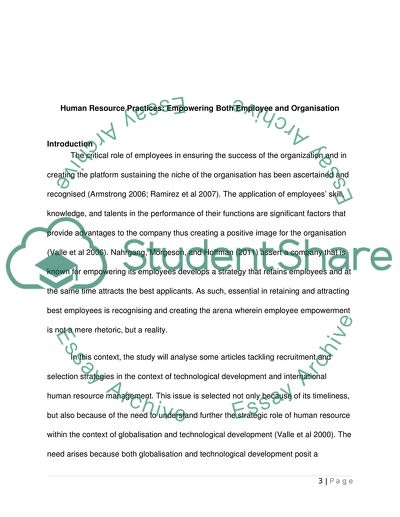Cite this document
(The Challenges and Opportunity in HR in the Contemporary Period Research Paper - 2, n.d.)
The Challenges and Opportunity in HR in the Contemporary Period Research Paper - 2. Retrieved from https://studentshare.org/human-resources/1791854-drawing-upon-at-least-three-research-based-source-documents-identify-one-other-contemporary-issue-in-hrm-critically-analyse-how-these-sources-shed-new-light-on-the-issue-and-propose-a-further-research-strategy-for-the-issue
The Challenges and Opportunity in HR in the Contemporary Period Research Paper - 2. Retrieved from https://studentshare.org/human-resources/1791854-drawing-upon-at-least-three-research-based-source-documents-identify-one-other-contemporary-issue-in-hrm-critically-analyse-how-these-sources-shed-new-light-on-the-issue-and-propose-a-further-research-strategy-for-the-issue
(The Challenges and Opportunity in HR in the Contemporary Period Research Paper - 2)
The Challenges and Opportunity in HR in the Contemporary Period Research Paper - 2. https://studentshare.org/human-resources/1791854-drawing-upon-at-least-three-research-based-source-documents-identify-one-other-contemporary-issue-in-hrm-critically-analyse-how-these-sources-shed-new-light-on-the-issue-and-propose-a-further-research-strategy-for-the-issue.
The Challenges and Opportunity in HR in the Contemporary Period Research Paper - 2. https://studentshare.org/human-resources/1791854-drawing-upon-at-least-three-research-based-source-documents-identify-one-other-contemporary-issue-in-hrm-critically-analyse-how-these-sources-shed-new-light-on-the-issue-and-propose-a-further-research-strategy-for-the-issue.
“The Challenges and Opportunity in HR in the Contemporary Period Research Paper - 2”, n.d. https://studentshare.org/human-resources/1791854-drawing-upon-at-least-three-research-based-source-documents-identify-one-other-contemporary-issue-in-hrm-critically-analyse-how-these-sources-shed-new-light-on-the-issue-and-propose-a-further-research-strategy-for-the-issue.


